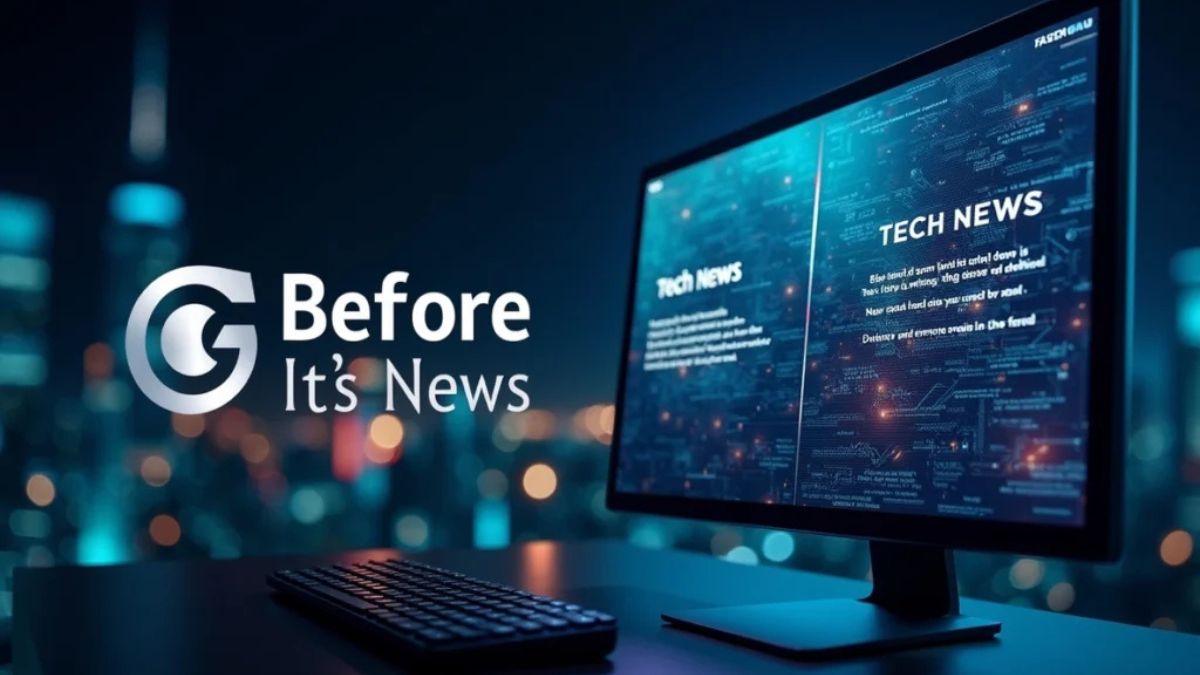The digital revolution transformed how we consume news, giving birth to platforms that challenged traditional media’s monopoly on information. Among these disruptors, “Before Its News” emerged as a controversial yet influential player in the alternative media landscape, promising to deliver stories “before” mainstream outlets picked them up.
This citizen journalism platform, launched in the early 2010s, allowed anyone to publish articles, breaking down the barriers between professional reporters and everyday citizens. While this democratization of news brought fresh perspectives and rapid reporting, it also sparked debates about credibility, misinformation, and the future of journalism itself.
Understanding the Before Its News phenomenon reveals important lessons about media literacy, the hunger for alternative narratives, and the complex relationship between traditional journalism and user-generated content in our interconnected world.
What Made Before Its News Different
Before Its News positioned itself as a platform where ordinary citizens could break stories ahead of major news networks. Unlike traditional news websites with editorial oversight, this platform operated on a more open model where registered users could submit articles on virtually any topic.
The site’s appeal lay in its promise of unfiltered information. Users could find stories about politics, conspiracy theories, health discoveries, and breaking news that allegedly wouldn’t appear in mainstream media for days or weeks. This approach attracted readers who felt distrustful of traditional news sources or sought information outside conventional narratives.
The platform’s interface resembled a typical news aggregator, but with a crucial difference: content came from amateur contributors rather than professional journalists. Articles ranged from legitimate citizen reporting to speculative pieces about government cover-ups, alternative health remedies, and fringe political theories.
The Appeal of Alternative News Platforms
Several factors contributed to the popularity of Before Its News and similar platforms. Growing distrust in mainstream media created a market for alternative media information sources. Readers increasingly questioned whether traditional outlets were providing complete, unbiased coverage of important events.
The platform also offered immediacy that appealed to news-hungry audiences. In an era where breaking news could spread across social media within minutes, Before Its News promised to be even faster, delivering stories before they reached conventional news cycles.
For contributors, the platform provided an outlet for voices that might never appear in traditional media. Local stories, personal experiences, and alternative media perspectives found a home where they could reach potentially large audiences without editorial gatekeeping.
The sense of community among users created another draw. Regular readers and contributors formed networks around shared interests and beliefs, fostering engagement that went beyond passive news consumption.
The Content Spectrum
Before Its News hosted an incredibly diverse range of content that defied easy categorization. Some articles provided legitimate local reporting on events that larger outlets might overlook. Citizens documented community issues, local government meetings, and regional stories that deserved broader attention.
However, the platform also became known for more controversial content. Conspiracy theories about government surveillance, alternative medicine claims, and speculative political analysis filled significant portions of the site. These articles attracted dedicated readerships but also drew criticism from fact-checkers and media watchdogs.
The lack of editorial oversight meant quality varied dramatically. Well-researched pieces with proper sourcing appeared alongside articles making extraordinary claims without supporting evidence. This inconsistency became both a strength and weakness of the platform’s approach.
Breaking news coverage represented another significant category. Contributors often shared developing stories from their local areas or specialized knowledge areas, sometimes providing valuable early reporting on significant events.
Challenges and Controversies
The open publishing model that defined Before Its News also created its biggest challenges. Without traditional editorial oversight, the platform struggled to maintain content quality and accuracy. Misinformation could spread as easily as legitimate news, making it difficult for readers to distinguish between credible reporting and speculation.
Fact-checking became a major concern as articles making bold claims often lacked proper verification. While some contributors maintained high standards for evidence and sourcing, others published unsubstantiated theories or misleading information that could influence public opinion.
The platform faced criticism from media literacy advocates who worried about its impact on public understanding of complex issues. The mixing of legitimate news with conspiracy theories and unverified claims created confusion about what constituted reliable information.
Legal challenges also emerged as some content crossed lines into defamation or harassment. The platform’s role as a publisher versus a neutral platform became a recurring question as regulators and courts grappled with accountability in the digital age.
Impact on Traditional Journalism
Before Its News and similar platforms forced traditional media to reconsider their approach to news delivery and audience engagement. The speed and accessibility of alternative media platforms highlighted shortcomings in conventional news operations, particularly around breaking news coverage and community-level reporting.
Some mainstream outlets began incorporating more citizen journalism elements, creating submission portals for reader-contributed content and increasing their social media engagement. The success of alternative media platforms demonstrated public appetite for more diverse voices and perspectives in news coverage.
However, the challenges faced by Before Its News also validated the importance of editorial processes, fact-checking, and journalistic standards. The platform’s struggles with misinformation reinforced the value of professional journalism practices, even as it highlighted the need for greater accessibility and inclusivity in news media.
The rise of alternative news platforms contributed to broader conversations about media literacy and critical thinking skills. Educators and librarians increasingly emphasized the importance of evaluating sources and understanding the difference between verified reporting and opinion or speculation.
Lessons for Media Consumers
The Before Its News phenomenon offers valuable lessons for navigating our complex media landscape. The platform’s success demonstrated genuine public demand for alternative media perspectives and more immediate news coverage, highlighting gaps in traditional media offerings.
However, its challenges underscore the importance of developing strong media literacy skills. Readers must learn to evaluate sources, cross-reference information, and distinguish between different types of content, from verified reporting to opinion pieces to speculation.
The platform’s experience also illustrates the tension between speed and accuracy in news delivery. While getting information quickly can be valuable, the rush to publish first sometimes compromised content quality and reliability.
The Evolution of Alternative Media
Before Its News represented an early example of how digital technology could democratize information sharing, but it also revealed the complexities of maintaining quality and credibility in open publishing environments. Its influence can be seen in the evolution of social media news sharing, podcast journalism, and other alternative media formats.
The platform’s legacy lives on in ongoing debates about platform responsibility, content moderation, and the balance between free expression and information quality. These discussions continue to shape how we think about news consumption and production in the digital age.
Understanding the Before Its News story helps us better navigate our current media environment, where information sources multiply rapidly and the lines between professional journalism and citizen reporting continue to blur.








